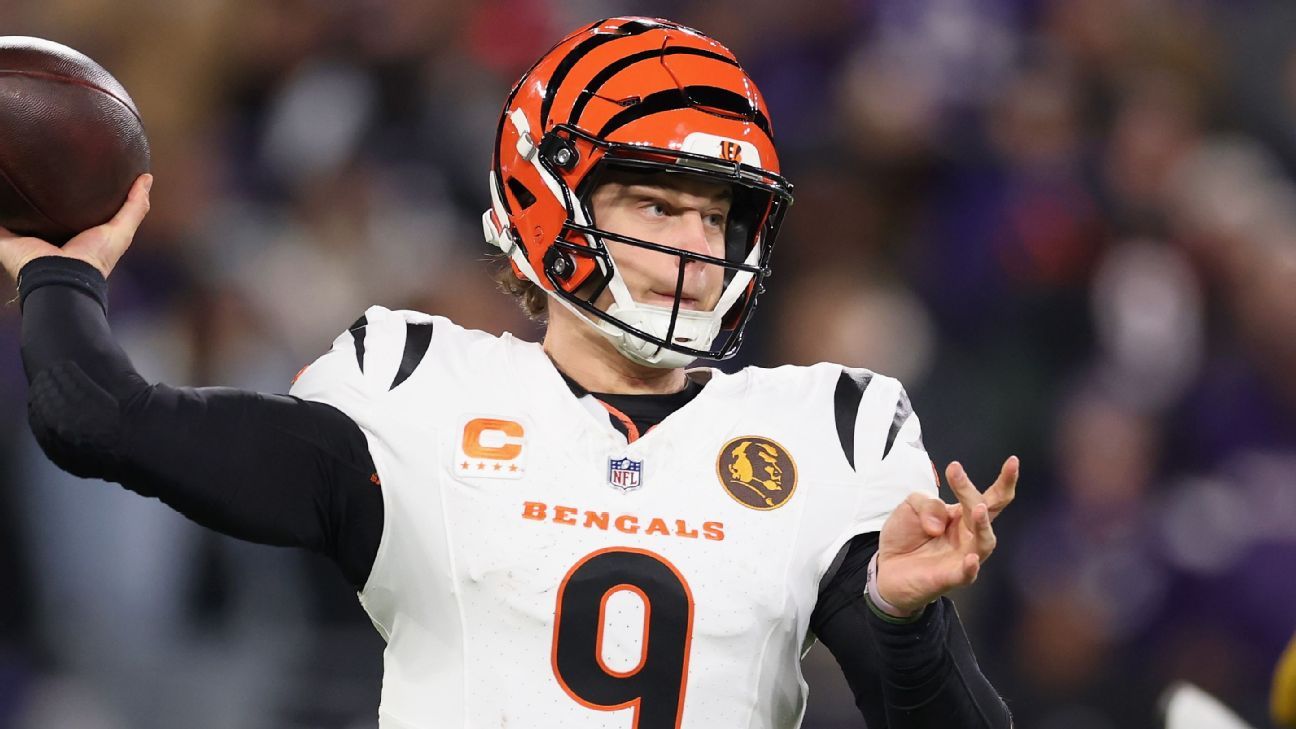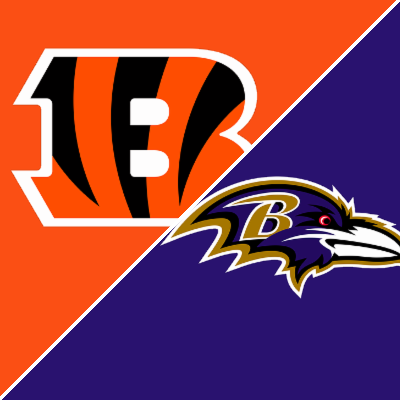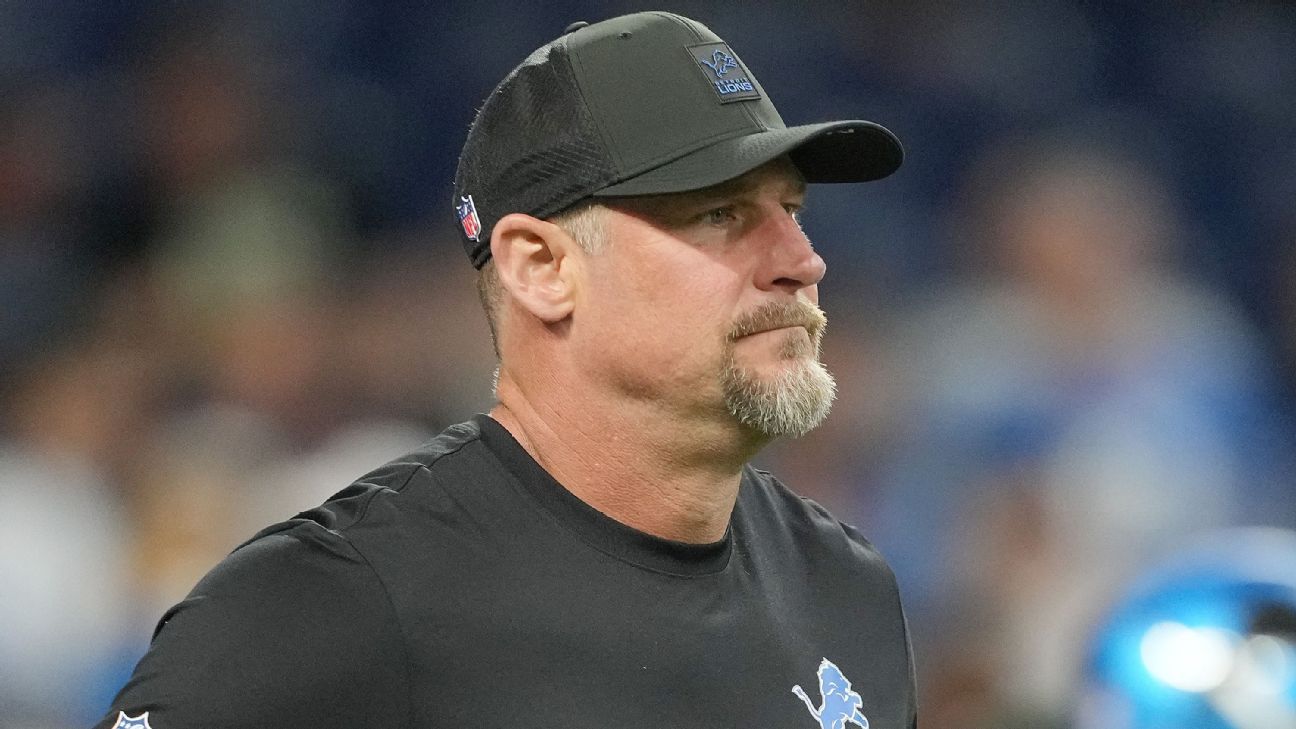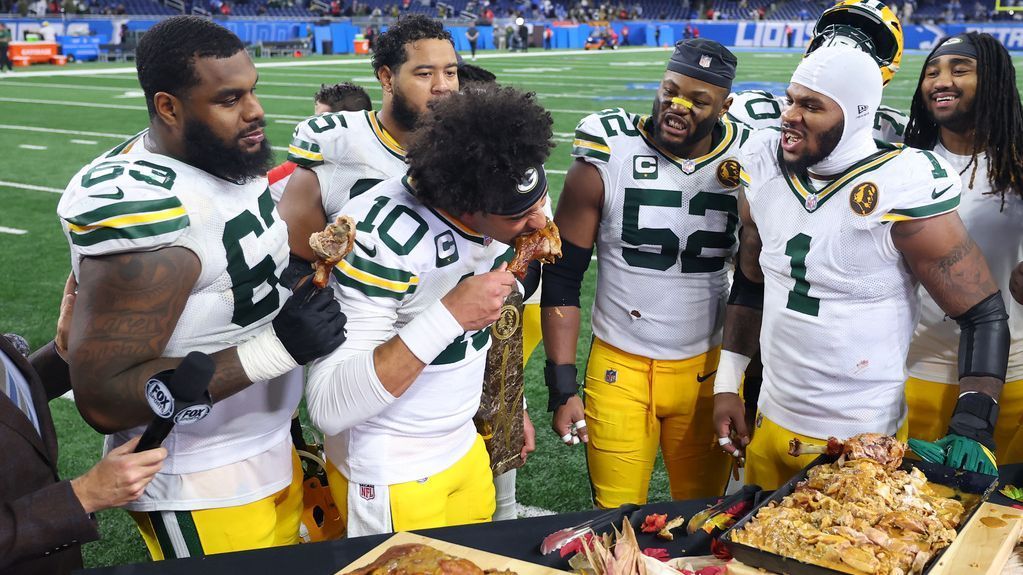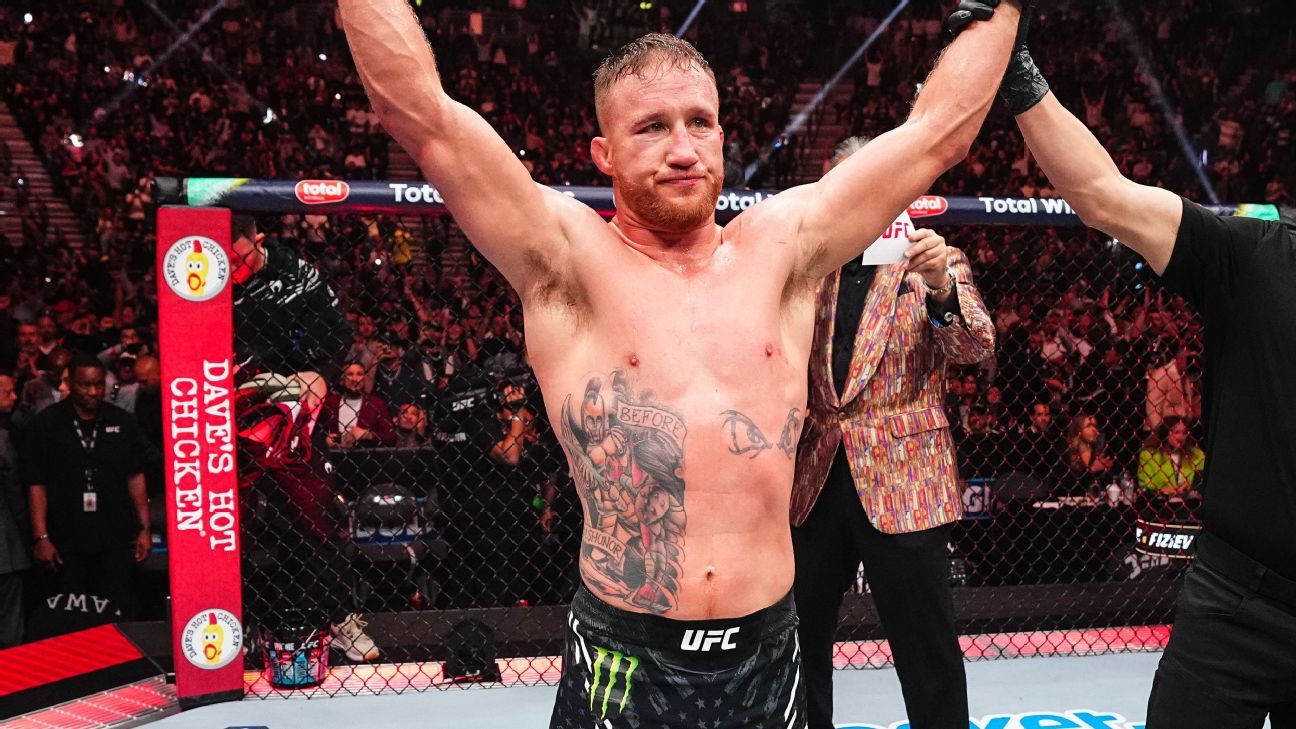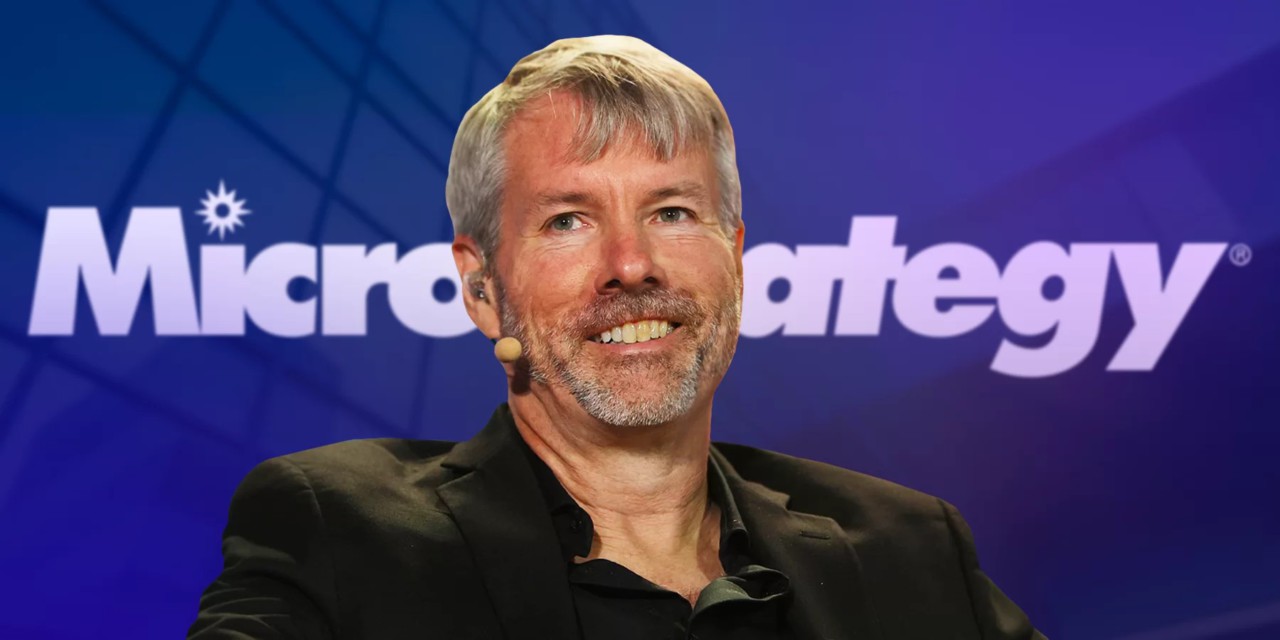
Seth WalderOct 21, 2025, 06:25 AM ET
- Seth Walder is an analytics writer at ESPN, specializing in quantitative analysis. He is also a regular on "ESPN Bet Live" and helps cover sports betting. Seth has been at ESPN since 2017. He previously worked at the New York Daily News covering the Jets and Giants. You can follow Seth on X via @SethWalder.
I'm a big believer in evaluating decision-making instantaneously -- but looking back at past choices can also be a valuable exercise.
At the 2024 NFL trade deadline, I graded the deals that were made based on expectations for the players involved, cap implications and how the moves affected the outlooks of the trading teams. A year later, we have a lot more information. So let's update our grades based on all we've learned. It's a useful calibration exercise for future grades, too.
When I'm doing grades at the time of a deal, I focus on process and the range of outcomes for each team. These grades will be focused on results and consider how players have performed since the trade (and expectations for them going forward if they're still with the team that traded for them).
So before the 2025 trade deadline hits on Nov. 4, let's take one more look at eight of the biggest 2024 trades -- what we thought then and what we know now.
Read more on 2025 trades:
Trade tracker | Trade grades
Jump to a 2024 regrade:
Adams | Baker/Jones
Browning | Cooper | Johnson
Lattimore | Mingo | Smith

![]()
![]()
WR Davante Adams to the Jets
New York Jets got: WR Davante Adams
Las Vegas Raiders got: 2025 conditional third-round pick
Trade date: Oct. 15
Original grade for the Jets: A-
New grade for the Jets: B+
Original grade for the Raiders: B-
New grade for the Raiders: B
At the time of the trade, the Jets were 2-4 and had fired head coach Robert Saleh. The hope was that a coaching change and the addition of Adams, who already had chemistry with Aaron Rodgers from their eight seasons together in Green Bay, would salvage a season that started with Super Bowl aspirations.
In my original grade I wrote: "By far the most likely result of all of this is we end up looking back on this deal as a burned third-round pick by the Jets. But that's not what this trade is about for them: They are playing for the upside, the less likely scenario where a few breaks go their way."
A year later the Jets have little to show in exchange for that third-round pick -- they managed just three wins after the deal -- but I don't think that's a totally fair way to evaluate the trade. Adams' numbers on the Jets were solid -- 2.25 yards per route run, 77.6 yards per game and a 30% target rate -- and he finished with an above-average 68 open score for the season, via ESPN's receiver scores. Those figures are better than I would have expected at the time of the deal.
While the addition of Adams reduced Garrett Wilson's target rate (it dropped from 27% without Adams on the field to 22%), Wilson's yards per route run remained an identical 1.76 regardless of whether Adams was on the field.
Ultimately, the Jets' 2024 failures were for reasons beyond Adams. As disappointing as the Jets' season turned out, the trade was logical at the time and Adams performed reasonably well. Teams have gotten far less for a third-round pick in the trade market.
Adams was unlikely to remain on the contract he had at the time of the trade -- it included $35.6 million in nonguaranteed money this season -- so there was always the possibility of this trade being a short-term acquisition. That became a near-certainty once the Jets parted with Rodgers.
As for the Raiders, I said in the original grade that they deserved an F for the entire Adams saga -- they held on to him for far too long and cost themselves dearly by doing so -- but a B- for their decision-making on the day of the trade. I was critical of them not eating some of Adams' salary in exchange for more draft compensation considering Las Vegas' cap situation, and that critique is still valid.
But if the ultimate question is whether the Raiders should have made this trade, the answer was yes at the time and yes now. For that they earn a B.
![]()
![]()
Seahawks trade LB Baker to Titans for LB Jones
Seattle Seahawks got: LB Ernest Jones IV
Tennessee Titans got: LB Jerome Baker, 2025 fourth-round pick
Trade date: Oct. 23
Original grade for Seahawks: B-
New grade for Seahawks: B+
Original grade for Titans: A-
New grade for Titans: B+
This trade was a surprise, not only because it was the second time Jones was traded in 2024 but because of the nature of it -- two contract-year, off-ball linebackers being dealt for each other along with a fourth-round pick.
Seattle's aggression was understandable: Head coach Mike Macdonald had success as a defensive coordinator in Baltimore with strong linebacker play, and Jones was an upgrade over Baker. I thought Jones, who had been used very effectively by the Rams as a blitzer, would thrive in that role for Macdonald, though that has been less of a focus than I imagined.
Jones has been solid for the Seahawks, with a 38.1% run stop win rate since the team acquired him entering Monday's game -- which ranks 19th among linebackers -- while Baker's 33.8% in the same span would rank 37th if he qualified. But Seattle's run-stopping performance has dramatically improved since Jones was acquired -- the Seahawks ranked 16th in EPA allowed per designed run (minus-0.03) prior to the trade last season and sixth after (minus-0.1). The Seahawks ranked first in the category this season entering Monday night (minus-0.15).
In coverage, Jones has allowed 0.9 yards per coverage snap -- average for a linebacker -- since joining the Seahawks, per NFL Next Gen Stats, and has recorded 1.0 sacks. He was a pending unrestricted free agent at the time of the deal, but the Seahawks re-signed him to a three-year, $28.5 million deal that includes only $10 million fully guaranteed, per OverTheCap.com. That looks like a bargain compared to other linebacker contracts handed out last offseason.
My issue from Seattle's perspective remains the same as it was a year ago -- a fourth-round pick and Baker was a steep price. While re-signing Jones took out the short-term aspect of the deal, the Seahawks could have feasibly signed him as a free agent in the offseason and kept the draft pick (though his contract might have been more expensive if they went that route). But looking at pure results, it's hard to argue with the Seattle's uptick in run-stopping since bringing on Jones.
This was clearly a value move for the Titans. With Tennessee out of contention and Jones a pending free agent, it made sense to acquire the draft capital it did. The Titans would not have earned a compensatory pick for Jones had they kept him, then let him walk in free agency, according to projections from OverTheCap.com. Even if they had re-signed him, he would hardly have made the current Titans contenders. This deal was, in retrospect, a win-win, even with Baker departing for the Browns in the offseason.
![]()
![]()
Edge rusher Baron Browning to the Cardinals
Arizona Cardinals got: Edge Baron Browning
Denver Broncos got: 2025 sixth-round pick
Trade date: Nov. 4
Original grade for Cardinals: B
New grade for Cardinals: B+
Original grade for Broncos: B
New grade for Broncos: C+
Browning became a little superfluous to the Broncos in 2024, with Jonathon Cooper and Nik Bonitto occupying the starting edge spots and then-rookie Jonah Elliss earning more playing time. So Denver decided to deal Browning ahead of his contract expiring at the end of the season.
He was an upgrade for the Cardinals, especially after they lost Dennis Gardeck for the rest of the season because of a torn ACL. At the time of the deal, the Cardinals were 5-4 and, while not true contenders, had a 50% chance to reach the playoffs, according to ESPN's Football Power Index. Acquiring a player on a cheap expiring contract such as Browning was perfectly reasonable.
And he performed a little better than expected. Browning was on the field 47% of the time for the Cardinals last season -- more often in passing situations -- and recorded an impressive 23% pass rush win rate at edge in that span (a very strong number), albeit with only 2.0 sacks and an average 9% pressure rate. But Browning was a helpful presence on the Cardinals, even though they finished 8-9 and missed the playoffs.
The Cardinals re-signed Browning in the offseason to a reasonable two-year, $15 million deal. He's playing a shade more this season and has a 17% pass rush win rate and 11% pressure rate -- both slightly above average -- along with two sacks. Finding a capable edge rusher on an affordable contract is not easy to do, so this was a good move for the Cardinals.
Browning would have served as depth on the Broncos last season. But considering they made the playoffs, in retrospect I would have preferred to hang on to him as a rotational player and insurance policy. At the time of the deal I noted that the Broncos had money to spend in the 2025 offseason, so a compensatory pick was no guarantee, but OverTheCap currently projects they will get two seventh-round pick compensatory picks next year.
![]()
![]()
WR Amari Cooper to the Bills
Buffalo Bills got: WR Amari Cooper, 2025 sixth-round pick
Cleveland Browns got: 2025 third-round pick, 2026 seventh-round pick
Trade date: Oct. 15
Original grade for the Bills: A-
New grade for the Bills: D+
Original grade for the Browns: B
New grade for the Browns: A-
The Bills were a Super Bowl hopeful with a clear need at receiver when they traded for Cooper. While Buffalo had a reliable slot receiver in Khalil Shakir, it was rolling with then-rookie Keon Coleman, Mack Hollins and sometimes Curtis Samuel on the outside -- an unideal combination.
While I wasn't overly enthralled with Cooper, I viewed the trade as a clear win for the Bills because the need was both so apparent and crucial. And even though Cooper had managed only 1.2 yards per route run in 2024, one could partially blame that on struggling Browns quarterback Deshaun Watson. After all, Cooper was also only a year removed from a 72-catch, 1,250-yard season.
The move did not pan out nearly as well as I thought. Though Cooper recorded 2.0 yards per route run as a Bill, that dramatically oversells his contributions as he missed a couple games because of a wrist injury and played fewer than half the snaps in the games he did play. He recorded 338 receiving yards over 11 games as a Bill (30.7 yards per game) and started only five games. Cooper was invisible in the playoffs, accumulating only 41 receiving yards over three games. He finished 2024 with a 39 open score, his worst since 2017, when the metric began.
Considering how little he produced with eventual MVP Josh Allen as his quarterback and the fact that he retired days before the 2025 season (after briefly signing with the Raiders), in retrospect it seems that Cooper's early 2024 numbers were simply an indication of a quick decline of a then-30-year-old receiver. Had the Bills realized that, they would never have given up a third-round pick. It was worth a swing, but the results weren't there.
Davante Adams would have been a much better option knowing what we know now, but keep in mind that the Bills would have had to give up more draft capital than the Jets did because Buffalo would have probably required the Raiders to eat most of Adams' remaining money.
For Cleveland, this deal looks better now than it did at the time. That's not only because of Cooper's fall-off, but also because he didn't sign with Las Vegas until August, so he would not have netted a compensatory selection. That's also a ding for Buffalo, which wasn't able to get a compensatory pick to partially offset the draft capital it surrendered in the trade.
![]()
![]()
WR Diontae Johnson to the Ravens
Baltimore Ravens got: WR Diontae Johnson, 2025 sixth-round pick
Carolina Panthers got: 2025 fifth-round pick
Trade date: Oct. 29
Original grade for the Ravens: A
New grade for the Ravens: C
Original grade for the Panthers: D
New grade for the Panthers: B+
I didn't understand this deal when it was made. Johnson was decent for Carolina (357 receiving yards in seven games), had previously demonstrated a high-end ability to get open and looked like a valuable addition to the Ravens' receiver room. And the cost to acquire him. a fifth- and sixth-round pick swap, was nothing compared to Johnson's talent.
What I didn't know at the time was that Johnson was in the midst of flaming himself out of the league. After playing 39 snaps and having one reception for the Ravens, the team suspended him for a December game after he refused to enter the team's contest against the Eagles. Later that month, the Ravens waived him.
Johnson was then picked up by the Texans and played two games for them -- including a wild-card win over the Chargers -- and caught three passes. The Texans cut Johnson before the divisional round. He was claimed by the Ravens in an attempt to land a compensatory pick for him as a pending unrestricted free agent. He signed with the Browns this offseason but failed to make the team, despite Cleveland needing receiving talent.
In retrospect, it's clear there were off-field factors at play that led to Carolina deciding it was ready to move on. That explains not just the trade, but the return. This was clearly a failed deal for Baltimore, but the cost was minimal -- hence the "C" I handed it on the regrade.
![]()
![]()
CB Marshon Lattimore to the Commanders
Washington Commanders got: CB Marshon Lattimore, 2025 fifth-round pick
New Orleans Saints got: 2025 third-round pick, 2025 fourth-round pick, 2025 sixth-round pick
Trade date: Nov. 5
Original grade for the Commanders: B+
New grade for the Commanders: D+
Original grade for the Saints: B+
New grade for the Saints: A
The first thing that went wrong for Washington with this deal was Lattimore struggling to get back on the field. At the time of the trade (ahead of Week 10), he was dealing with a hamstring injury. He didn't play until Week 14 and made only two regular-season appearances for the Commanders in 2024.
Lattimore was part of the Commanders' surprise playoff run to the NFC Championship Game and had mixed results. Longtime rival Mike Evans got the best of him in the wild-card round, with six receptions on six targets for 84 receiving yards and a touchdown, per NFL Next Gen Stats, plus a pass interference penalty. Lattimore rebounded the next week, not allowing any receptions in the divisional round win over the Lions, before giving up 103 receiving yards in his coverage in the conference championship loss to the Eagles.
This season, Lattimore has allowed 1.3 yards per coverage snap, higher than average for an outside corner, though his 13% target rate is lower than average. In addition, he has been penalized seven times -- tied for the second most among outside corners. One of those penalties came when he was badly beaten by Drake London on an out-and-up (London still caught the pass for 43 yards despite the defensive holding).
Since joining the Commanders, Lattimore has recorded 1.4 yards allowed per coverage snap, above average for the position, and 2.9 yards allowed per man coverage snap, a more alarming number. At age 29, it's safe to say the Commanders have not gotten -- and are unlikely to get -- the peak Lattimore they hoped for.
The cost was substantial. Based on our draft pick valuations, the Commanders traded the equivalent of a late second-round pick. Lattimore cost them almost nothing financially in 2024, but the Commanders had to pay him $18 million this year. I did not think it was a lock that Washington would retain Lattimore at that price, though it ultimately did.
At the time of the trade, I commended the aggression and still think the thought process was correct -- there's no sense waiting when a contention window opens. And the 2024 Commanders were great evidence of why that's a good strategy, going on a deeper run than most expected. But Lattimore didn't solve the cornerback woes they had at the time, and they paid a decent amount for that miss.
I viewed this trade as a win-win when it was made, and I thought recouping value for Lattimore was a positive for a Saints team that was going nowhere. I hoped it was the first step to embracing a rebuild. While that didn't really turn out to be true, getting real draft capital for Lattimore was far better than retaining him for a back half of a New Orleans season that didn't really matter.
Had the Saints kept Lattimore and tried to trade him this offseason, I'm guessing they wouldn't have gotten nearly the same return because of his hamstring injury and the uptick in his salary from 2024 to 2025. In retrospect, It's hard to view this deal as anything but a pure win for New Orleans.
![]()
![]()
WR Jonathan Mingo to the Cowboys
Dallas Cowboys got: WR Jonathan Mingo, 2025 seventh-round pick
Carolina Panthers got: 2025 fourth-round pick
Trade date: Nov. 5
Original grade for the Cowboys: D+
New grade for the Cowboys: F
Original grade for the Panthers: A
New grade for the Panthers: A
Sometimes inexplicable trades happen because we don't have all the information (see Johnson, Diontae). But sometimes they happen because a team simply made an inexplicable choice. That's the case here.
At the time of this deal, the Cowboys were 3-5 and quarterback Dak Prescott had just suffered a hamstring injury that would eventually cost him the rest of the season. That doesn't prevent them from making a deadline deal, but the return should have been great. It wasn't.
Mingo's numbers at the time of the trade were rough: 0.8 yards per route run over the first season and a half of his career and, at the time of the deal, an open score that would have ranked 110th out of 111 wide receivers had he played enough to qualify.
It turns out those numbers were a sign of what was to come. Mingo managed five receptions for 46 yards ... over eight games with the Cowboys. He has been on injured reserve because of a knee injury and has yet to play this season.
There's nothing wrong with taking a swing on a young player who hasn't lived up to his draft stock. It's just that the price was way too high. And that was especially true considering how little the second half of last season meant for Dallas. Carolina deserves credit for recognizing the value of the offer and cutting their losses -- getting a fourth- and seventh-round swap for their 2023 second-round pick was a gift.
![]()
![]()
Edge rusher Za'Darius Smith to the Lions
Detroit Lions got: Edge Za'Darius Smith, 2026 seventh-round pick
Cleveland Browns got: 2025 fifth-round pick, 2026 sixth-round pick
Trade date: Nov. 5
Original grade for Lions: B+
New grade for the Lions: B+
Original grade for Browns: B
New grade for the Browns: B
The mid-2024 Lions had a clear need for pass-rushing help, as star edge rusher Aidan Hutchinson broke his leg and was expected to be out for the rest of the regular season and, most likely, the playoffs.
The then-32-year-old Smith wasn't a perfect option, but there were no perfect options (outside of Trey Hendrickson in a megadeal, perhaps) for a team with Super Bowl aspirations. But Smith was still an upgrade compared to who the Lions had at the time (Josh Paschal, Trevor Nowaske and pre-breakout Al-Quadin Muhammad).
In nine games as a Lion between the regular season and the playoffs, Smith delivered four sacks, a 12% pass rush win rate and an 11% pressure rate -- rates that were a little below average and a little above average, respectively, for an edge rusher. While those numbers aren't amazing, it was probably an upgrade of what they would have gotten from that spot had they not dealt for Smith. And the cost was reasonable. Even though the Lions didn't end up making the Super Bowl run they hoped, this was a worthwhile move.
The Lions released Smith during the offseason rather than paying him $11 million in salary and bonuses. He signed with the Eagles in September before suddenly retiring in October.
This exchange worked out from Cleveland's perspective. They didn't get a massive haul for Smith but, considering his age and the Browns' non-contending status, they did well to get some draft capital for him.
.png)
 1 month ago
30
1 month ago
30












